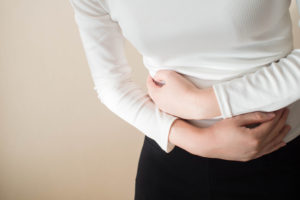Uterine Fibroids
If you have a uterus, then you already know there are countless issues to keep in mind and a full maintenance schedule for your uterine health. There is yet another concept to add to your list: uterine fibroids. Ideally, your OBGYN or primary care doctor has already talked to you about these. But if this is the first time you come across this term, fear not–uterine fibroids are extremely common, and 99% of the time they are also harmless. However, that does not mean you should ignore them, or that they don’t contribute their fair share of challenges in your cycle.
What are uterine fibroids and how do I know I have them?
Uterine fibroids, also known as leiomyomas, are quite simple: they are noncancerous growths (or tumors, though that word is admittedly scary) made up of the connective tissue and muscle from the wall of the uterus. They can grow solo, or in a cluster, and are most commonly less than 8 inches in diameter– though they can grow larger. Many people with a uterus do not even realize they have uterine fibroids, unless some of the symptoms start becoming more prominent, or you specifically ask your OBGYN to look for them.
The most common signs of uterine fibroids include heavy menstrual bleeding, periods lasting more than a week, bleeding between your periods, frequent urination or difficulty emptying your bladder–usually resulting in a feeling of heaviness in your lower abdomen–constipation, lower back pain, and even pain during sex. These symptoms are definitely not an exclusive list, and presence of such symptoms does not guarantee the only issue is uterine fibroids: if you have concerns, it is advised that you consult with your doctor so you can know exactly what you are dealing with.
How are they diagnosed and treated?
If you are concerned about the presence of uterine fibroids, you can ask to have an ultrasound done to determine the presence of uterine fibroids. The ultrasound can be transabdominal, and/or be done inside your vagina to get pictures of the uterus. Your doctor may also order blood count tests to determine if you have anemia from chronic blood loss, and to rule out other bleeding disorders. If these methods do not yield satisfactory results, there are more in depth tests that your OBGYN can order, such as an MRI, hysterosonography, or hysteroscopy.
Since uterine fibroids are benign, the recommended treatment–as long as they are not causing significant issues in your day to day life and do not interfere with your fertility–is to keep an eye on them. They rarely grow and do not tend to interfere with fertility and/or pregnancy, and also tend to shrink after menopause. There are possible medications that your doctor may prescribe, medication which control your hormone levels to create menopause-like conditions. This tricks the fibroids into thinking your body has entered menopause, and causes them to shrink along with their unpleasant effects (such as heavy bleeding). Though there are procedures available as well, this is a step you would discuss at length with your doctor.
https://www.mayoclinic.org/diseases-conditions/uterine-fibroids/diagnosis-treatment/drc-20354294
https://my.clevelandclinic.org/health/diseases/9130-uterine-fibroids#diagnosis-and-tests


